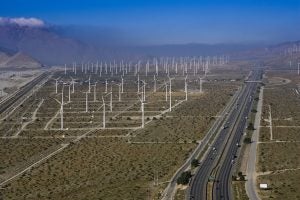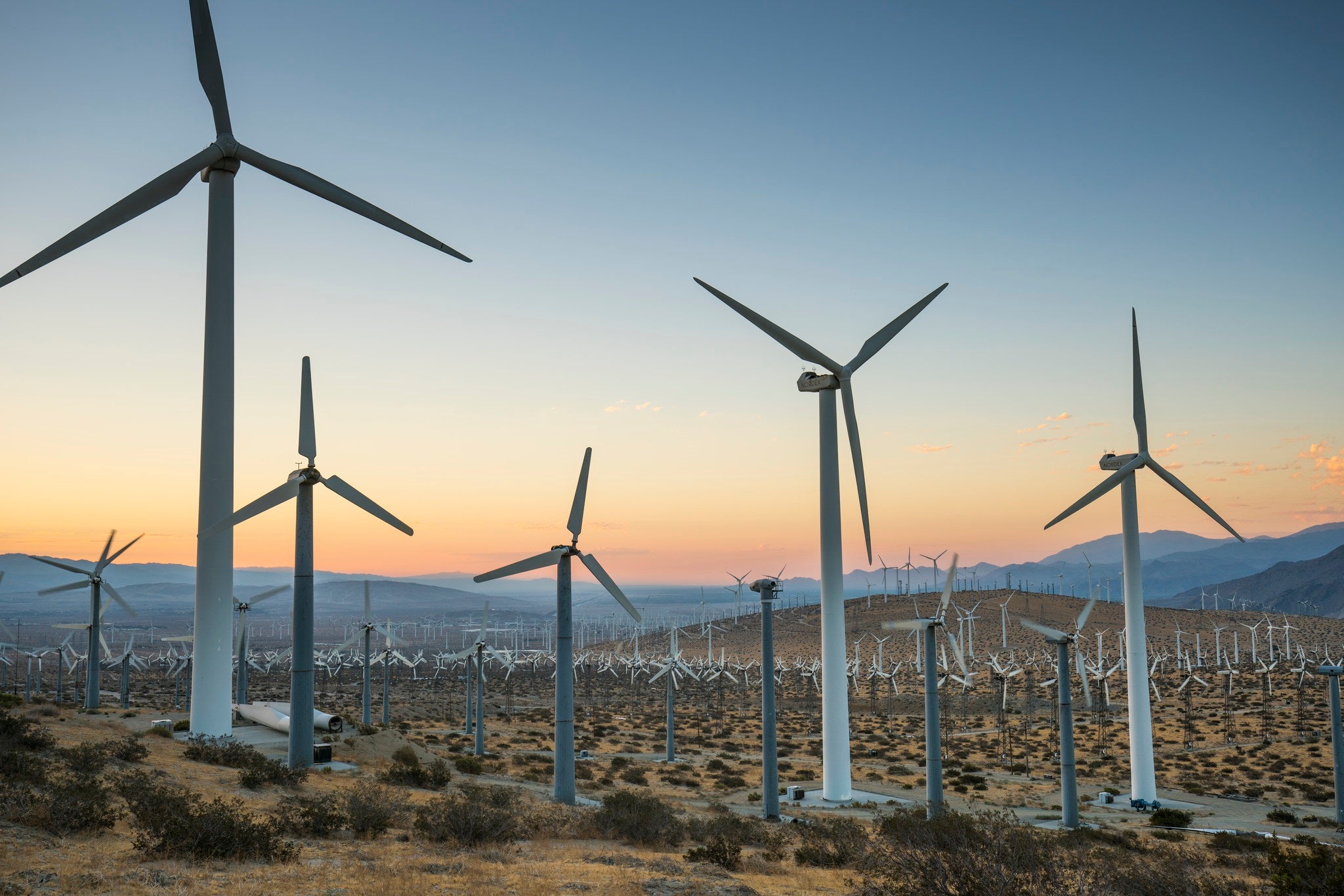
Western Climate Initiative kicks off 2022 with strong results – and high hopes for greater ambition
This was was co-authored with Caroline Jones, Analyst for U.S. Climate.
The results of the Western Climate Initiative’s February auction were released today, and all current vintage allowances sold at a record-high price – raising over $970 million for the Greenhouse Gas Reduction Fund.
These results arrive alongside major opportunities for California to bolster its climate leadership. The state’s Climate Change Scoping Plan update, which intends to chart a pathway to achieving California’s 2030 and 2045 greenhouse gas reduction goals, is well underway with preliminary modeling results expected this spring. And recently, a group of experts released a report highlighting ways California can strengthen its cap-and-trade program and make the most of its Scoping plan.
Auction quick takes
- All 58,527,697 current vintage allowances offered were sold; this is the sixth consecutive sold out auction.
- Current vintage allowances cleared at $29.15 — $9.45 above the floor price of $19.70 and $0.89 above the November 2021 settlement price of $28.26. This quarter’s settlement price is another record-setter, beating the price record set in the previous auction.
- 89% of the 7,942,750 future vintage allowances offered for sale sold. This is the first auction since May 2020 when the advance auction did not sell out, which could be due to the number of allowances entities have already banked for future use. These allowances may not be used for compliance until 2025.
- Future vintage allowances sold at the price floor of $19.70.
- In this auction, California raised over $970 million for the Greenhouse Gas Reduction Fund (GGRF). The GGRF invests in communities and helps improve local air quality through initiatives like the Clean Mobility Options program.
- Quebec raised over $280 million USD (over $360 million CAD) which supports climate investments in the province.
What factors may be at play with these results?
Today’s results reflect a strong and steady market with a solid price signal. There are a couple of notable factors that may have contributed to the February auction outcome:
1. This auction was the first with the increased price floor of $19.70 in place, an increase of almost $2.00 from the previous price floor, also known as the reserve price. This is the highest annual increase in the price floor, likely affected by the uptick in inflation nationally. Every year, the price floor rises by 5% plus the rate of inflation. And while allowance auctions have been consistently settling above the price floor, a steadily-increasing minimum price is still important to ensure an ongoing signal for emissions abatement.
2. The volume of allowances offered for sale in February was much lower than what was offered in the previous auction. In November, WCI offered approximately 68.6 million allowances, while only approximately 58.5 million allowances were available for purchase this quarter. This decline is occurring because fewer previously-unsold allowances are being offered for resale, and because the cap is tightened annually. If an auction does not sell out of allowances, the unsold allowances are held, creating a temporary tightening of the cap, and then slowly re-offered at auction after two consecutive auctions have sold out. However, at this point, most previously-unsold allowances have already been re-offered and sold, so there were fewer on offer in February. A lower supply of allowances can drive settlement prices higher.
As always, it is important to remember that the most important feature of any cap-and-trade program is the cap and whether it is ambitious enough to ensure that emissions decline at the pace and scale required to meet the accelerating climate crisis. The quantitative limit on emissions from a high-integrity cap is essential, and why California should be considering in the Climate Change Scoping Plan the opportunity to achieve more reductions in the current decade.
New expert report highlights opportunities to strengthen California’s carbon market
A new report from California’s Independent Emissions Market Advisory Committee (IEMAC), finalized just before the February auction, weighs in on several ways California’s cap-and-trade program – and overall climate strategy – can be strengthened. Here are three key opportunities the report highlights:
1. Maximize cumulative emission reductions this decade with a tighter emissions cap. California beat its 2020 emissions goal and can’t let up now, with wildfires, drought, and dangerous heat intensifying across the state. To fend off the worst climate impacts, we need to minimize the cumulative build-up of climate pollution. That means accelerating emission reductions to prevent as much pollution from entering the atmosphere as possible in this decade.
One key opportunity for California to meet this moment is increasing the stringency of its statewide pollution limit. A tighter emissions “cap” across the economy can help California limit the quantity of allowances – and thus pollution – to the steep and persistent reduction trajectory consistent with the state’s climate goals. The IEMAC report presents several design tools to raise ambition in the cap-and-trade program, including adjustments to the allowance supply and price, and policies to bolster the Greenhouse Gas Reduction Fund to ensure it continues to advance critical equity and environmental priorities.
These design features are worth exploring to ensure California is maximizing pollution cuts in this decade and, therefore, is securing the safest climate future – and the cleanest air – for communities. Air regulators have no time to waste to elevate their fight against the climate crisis.
2. Ensure that cap and trade remains a solid emissions backstop. California’s economy-wide pollution cap provides the greatest possible certainty that the state will curb climate pollution to the levels required – and critically – that cumulative pollution is budgeted over time consistent with the pathway science demands. The IEMAC report raises key considerations to ensure the program cap is calibrated to serve as a backstop for meeting California’s goals. Notably, IEMAC analysis finds that 321 million allowances from the Western Climate Initiative are currently “banked” – meaning they can be used for compliance in future years. While the ability to bank allowances is an important feature to bring reductions forward in time, California also needs to account for these banked allowances to ensure that the program is calibrated to achieve the state’s goals.
3. The Scoping Plan should chart a course to our climate targets. California is in the process of updating its Climate Change Scoping Plan, which will guide the state toward reducing climate pollution 40% by 2030 and achieving net-zero emissions no later than 2045. The Scoping Plan thus far has centered on identifying long-term technology outcomes, such as the state’s energy mix and electric vehicle deployment levels. While envisioning the scale of technology deployment that will enable California to meet its climate goals is an important part of the Scoping Plan, it should also map how the state will get there.
In the report, IEMAC calls on California’s climate plan to provide an actionable blueprint of policy steps that can actually drive pollution cuts. That includes evaluating the current suite of climate policies and identifying where existing policy can be strengthened to accelerate and deepen pollution reductions – or where additional policy may be needed.
A sharper focus on policy tools would also enable California to examine who bears the costs of mitigation and who stands to benefit from reduced pollution. Climate action can and should prioritize improvements in local air quality and affordability where they are needed most – but, as the IEMAC notes, “technology outcomes alone do not determine the distribution of costs and benefits to Californians.” Policy measures must be designed to deliver on these crucial health, equity, and affordability outcomes – especially in communities overburdened by pollution.
As a long-time national and global climate leader, all eyes are on California as it plans the next phase of its climate fight. The state should continue to lead the charge with an even stronger cap and trade program that deepens pollution cuts and an actionable Scoping Plan that models a concrete and comprehensive climate policy approach.
Katelyn Roedner Sutter, Senior Manager, U.S. Climate at EDF, is a member of the Independent Emissions Market Advisory Committee.












